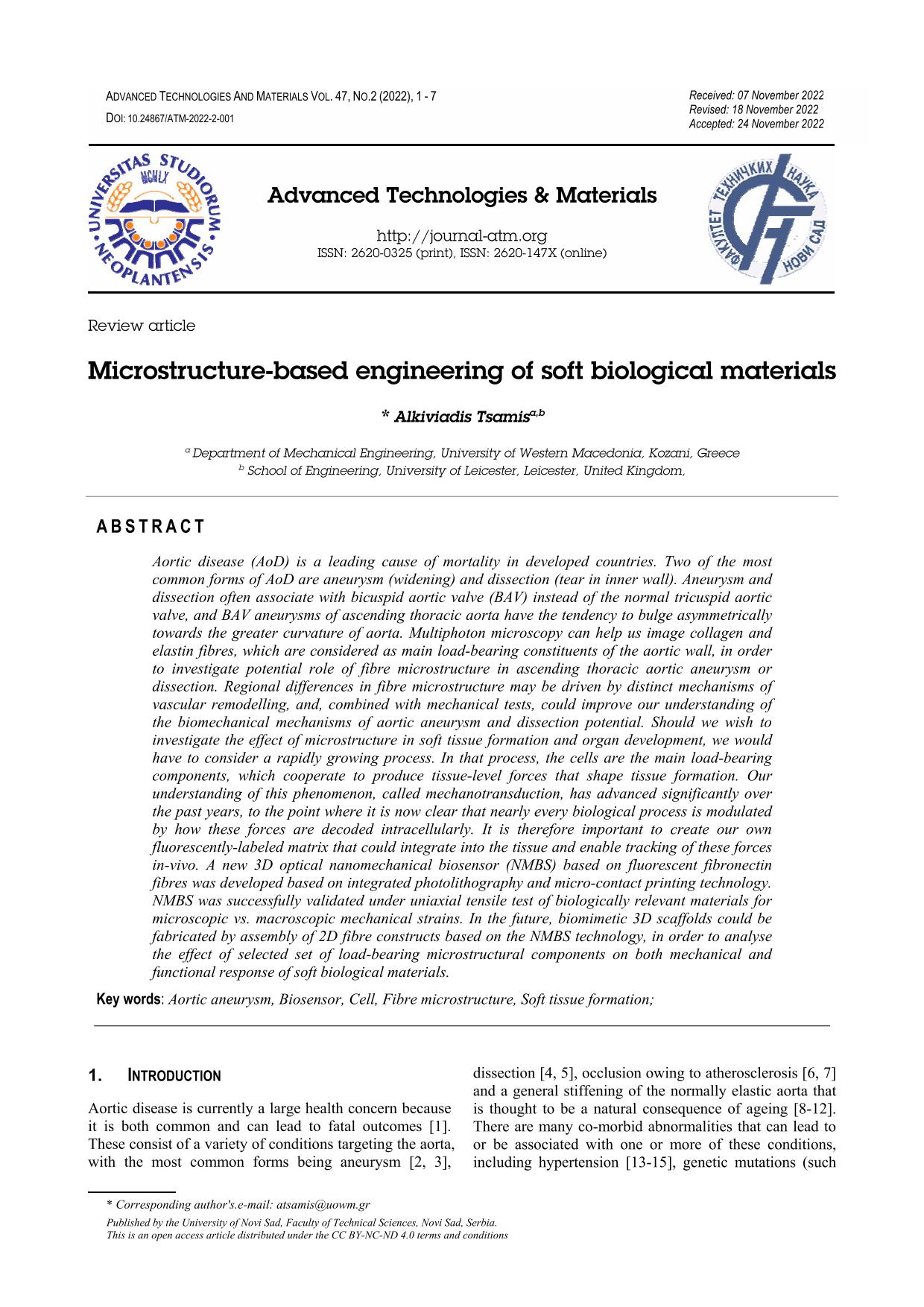
Published 2022-12-20
abstract views: 31 // Full text article (PDF): 16
Keywords
- Aortic aneurysm,
- Biosensor,
- Cell,
- Fibre microstructure,
- Soft tissue formation
How to Cite

This work is licensed under a Creative Commons Attribution 4.0 International License.
Abstract
Aortic disease (AoD) is a leading cause of mortality in developed countries. Two of the most common forms of AoD are aneurysm (widening) and dissection (tear in inner wall). Aneurysm and dissection often associate with bicuspid aortic valve (BAV) instead of the normal tricuspid aortic valve, and BAV aneurysms of ascending thoracic aorta have the tendency to bulge asymmetrically towards the greater curvature of aorta. Multiphoton microscopy can help us image collagen and elastin fibres, which are considered as main load-bearing constituents of the aortic wall, in order to investigate potential role of fibre microstructure in ascending thoracic aortic aneurysm or dissection. Regional differences in fibre microstructure may be driven by distinct mechanisms of vascular remodelling, and, combined with mechanical tests, could improve our understanding of the biomechanical mechanisms of aortic aneurysm and dissection potential. Should we wish to investigate the effect of microstructure in soft tissue formation and organ development, we would have to consider a rapidly growing process. In that process, the cells are the main load-bearing components, which cooperate to produce tissue-level forces that shape tissue formation. Our understanding of this phenomenon, called mechanotransduction, has advanced significantly over the past years, to the point where it is now clear that nearly every biological process is modulated by how these forces are decoded intracellularly. It is therefore important to create our own fluorescently-labeled matrix that could integrate into the tissue and enable tracking of these forces in-vivo. A new 3D optical nanomechanical biosensor (NMBS) based on fluorescent fibronectin fibres was developed based on integrated photolithography and micro-contact printing technology. NMBS was successfully validated under uniaxial tensile test of biologically relevant materials for microscopic vs. macroscopic mechanical strains. In the future, biomimetic 3D scaffolds could be fabricated by assembly of 2D fibre constructs based on the NMBS technology, in order to analyse the effect of selected set of load-bearing microstructural components on both mechanical and functional response of soft biological materials.

